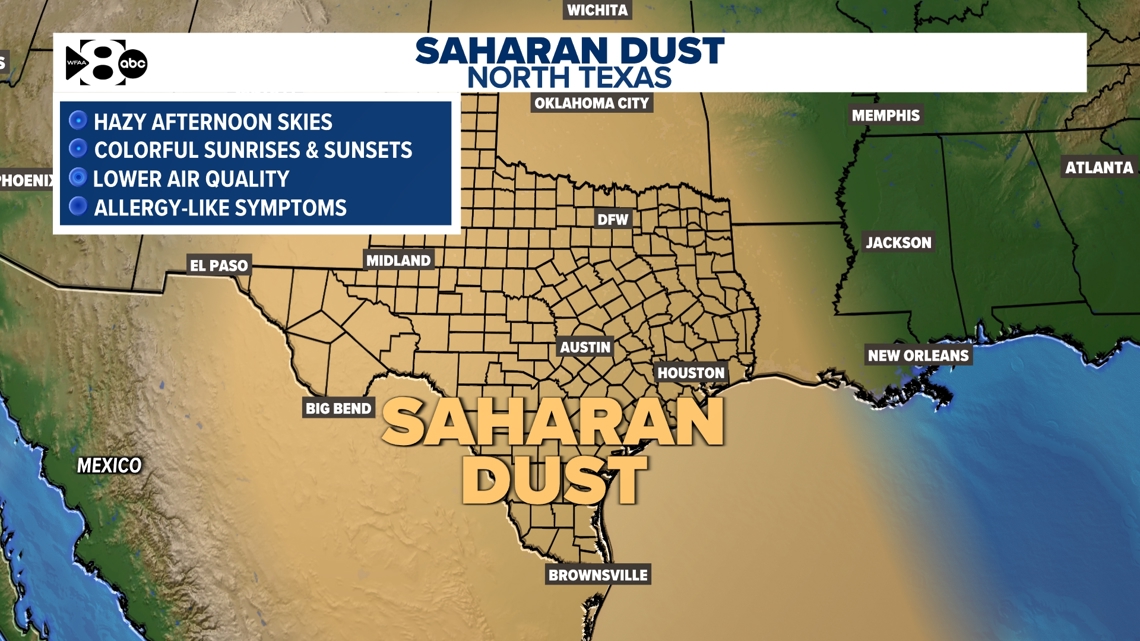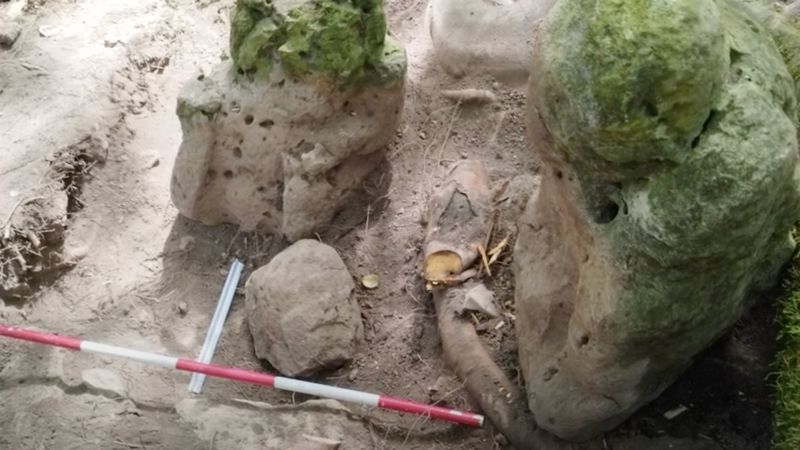Saharan Dust: Understanding Its Long Journey To North Texas

Welcome to your ultimate source for breaking news, trending updates, and in-depth stories from around the world. Whether it's politics, technology, entertainment, sports, or lifestyle, we bring you real-time updates that keep you informed and ahead of the curve.
Our team works tirelessly to ensure you never miss a moment. From the latest developments in global events to the most talked-about topics on social media, our news platform is designed to deliver accurate and timely information, all in one place.
Stay in the know and join thousands of readers who trust us for reliable, up-to-date content. Explore our expertly curated articles and dive deeper into the stories that matter to you. Visit Best Website now and be part of the conversation. Don't miss out on the headlines that shape our world!
Table of Contents
Saharan Dust: Understanding its Long Journey to North Texas
North Texans may be familiar with the hazy skies and occasional reddish sunsets, phenomena often attributed to the seemingly far-off Sahara Desert. But how does this dust, traveling thousands of miles, impact our region? Understanding the journey of Saharan dust and its effects is crucial for public health, environmental awareness, and appreciating the interconnectedness of our global climate.
The Epic Journey: From Sahara to Texas
The Saharan Air Layer (SAL), a mass of dry, dusty air originating over the Sahara Desert, embarks on a transatlantic voyage each year. Driven by powerful easterly winds, this colossal air mass, often several kilometers thick, crosses the Atlantic Ocean, reaching the Caribbean and eventually parts of North America, including Texas. This journey can take anywhere from five to seven days. The dust itself consists of fine sand and clay particles, along with various minerals, pollutants, and even microorganisms.
The Science Behind the Travel:
Several meteorological factors contribute to this remarkable journey:
- African Easterly Waves: These tropical waves are crucial in transporting the SAL westward across the Atlantic. They provide the necessary lift and momentum for the dust-laden air to travel such vast distances.
- Trade Winds: Prevailing trade winds push the SAL across the ocean, guiding its path towards the Americas.
- High-Pressure Systems: The strength and location of high-pressure systems influence the SAL's trajectory and intensity.
Impact on North Texas:
While the presence of Saharan dust might seem like a distant phenomenon, it has tangible effects on North Texas:
- Air Quality: While usually not posing significant respiratory threats to healthy individuals, high concentrations of Saharan dust can exacerbate existing respiratory conditions like asthma. Individuals with respiratory sensitivities should monitor air quality reports during periods of high dust concentration. You can find real-time air quality updates on the .
- Reduced Air Visibility: The dust causes a noticeable haze, reducing visibility, especially during sunrise and sunset, which can impact air travel and outdoor activities.
- Stunning Sunsets: The fine dust particles scatter sunlight, often creating vibrant and colorful sunsets, a captivating visual consequence of this long journey.
- Ocean Fertilization: While primarily affecting Texas in the ways listed above, the dust plays a critical role in fertilizing marine life in the Atlantic Ocean. The minerals within the dust act as nutrients for phytoplankton, supporting the marine food web.
- Climate Impacts: Recent research suggests that Saharan dust can influence hurricane development, potentially weakening storms by reducing ocean surface temperatures. However, this remains an area of ongoing scientific investigation.
Monitoring the Dust:
Several organizations monitor the movement and impact of Saharan dust. Meteorological agencies like the National Oceanic and Atmospheric Administration (NOAA) provide regular updates and forecasts. Staying informed about these forecasts can help individuals prepare for potential impacts on air quality and visibility.
Conclusion:
The journey of Saharan dust to North Texas showcases the interconnectedness of our global climate system. While its presence can sometimes affect air quality, it also contributes to fascinating natural phenomena, highlighting the complex and often surprising ways in which distant events can impact our local environment. Keeping an eye on weather forecasts and air quality reports during peak dust seasons allows for informed decisions and necessary precautions.

Thank you for visiting our website, your trusted source for the latest updates and in-depth coverage on Saharan Dust: Understanding Its Long Journey To North Texas. We're committed to keeping you informed with timely and accurate information to meet your curiosity and needs.
If you have any questions, suggestions, or feedback, we'd love to hear from you. Your insights are valuable to us and help us improve to serve you better. Feel free to reach out through our contact page.
Don't forget to bookmark our website and check back regularly for the latest headlines and trending topics. See you next time, and thank you for being part of our growing community!
Featured Posts
-
 Urgent Search For Missing Lexington Teen Police Investigate Possible Danger
May 31, 2025
Urgent Search For Missing Lexington Teen Police Investigate Possible Danger
May 31, 2025 -
 Jeremy Clarksons Sidekick Women Are Essential To Agriculture
May 31, 2025
Jeremy Clarksons Sidekick Women Are Essential To Agriculture
May 31, 2025 -
 Addressing Newark Airports Air Traffic Issues New Proposal From Secretary
May 31, 2025
Addressing Newark Airports Air Traffic Issues New Proposal From Secretary
May 31, 2025 -
 3 000 Year Old Mayan Complex Discovered Pyramids Canals And A Lost Civilization
May 31, 2025
3 000 Year Old Mayan Complex Discovered Pyramids Canals And A Lost Civilization
May 31, 2025 -
 Newark Airports Air Traffic Control System Project Delays And Future Outlook
May 31, 2025
Newark Airports Air Traffic Control System Project Delays And Future Outlook
May 31, 2025
Latest Posts
-
 Noel Clarkes Libel Case Against The Guardian Dismissed
Aug 23, 2025
Noel Clarkes Libel Case Against The Guardian Dismissed
Aug 23, 2025 -
 Hawaii Rainbow Warriors Face Stanford In Season Opener National Tv Broadcast
Aug 23, 2025
Hawaii Rainbow Warriors Face Stanford In Season Opener National Tv Broadcast
Aug 23, 2025 -
 Country Star Weighs In Charley Crocketts Public Backing Of Beyonce Amidst Ongoing Debate
Aug 23, 2025
Country Star Weighs In Charley Crocketts Public Backing Of Beyonce Amidst Ongoing Debate
Aug 23, 2025 -
 New Couple Alert Jennifer Aniston And Jim Curtiss Adorable Behind The Scenes Video
Aug 23, 2025
New Couple Alert Jennifer Aniston And Jim Curtiss Adorable Behind The Scenes Video
Aug 23, 2025 -
 Surge In St Georges And Union Jack Flags Reasons Behind The Increase
Aug 23, 2025
Surge In St Georges And Union Jack Flags Reasons Behind The Increase
Aug 23, 2025
